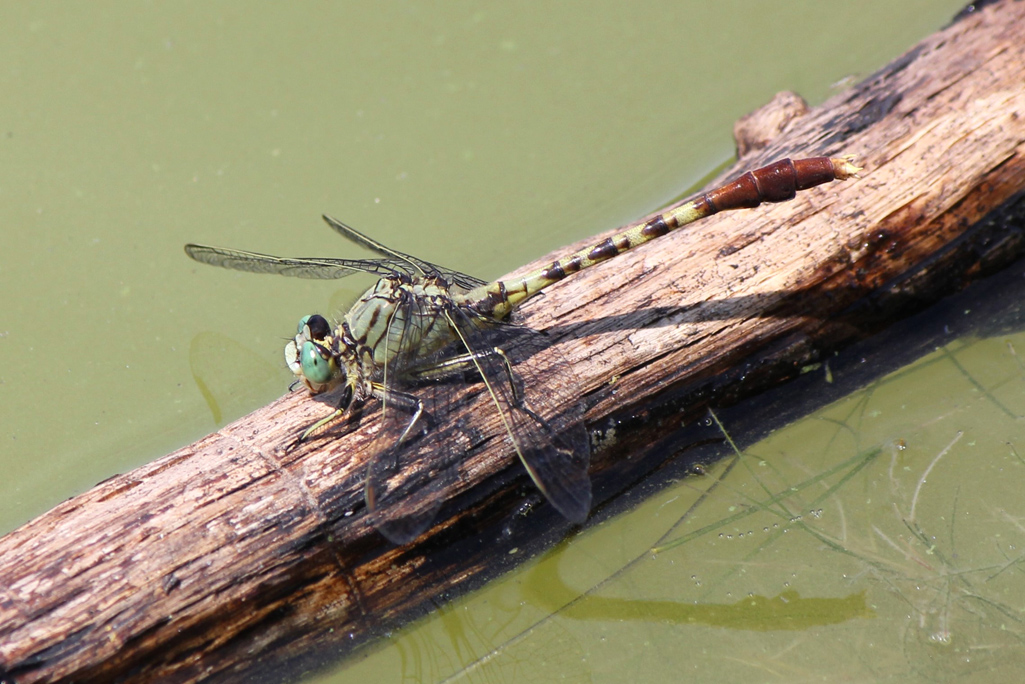
by Kate Redmond
Jade Clubtail Dragonfly
Greetings, BugFans,
Last year, BugFan Nancy told the BugLady that she was making a quilt with a dragonfly motif, and asked what colors dragonflies came in. All of them. The BugLady sent her pictures of blue, green, purple, orange, red, and a variety of multi-colored dragons and damsels. The BugLady promises that BOTW is not going to march through the entire list of North American dragonflies and damselflies, but, oh my, isn’t this a handsome dragonfly! Plus, it’s being photobombed in one shot by a brilliantly-orange Eastern Amberwing dragonfly (interestingly, one of the BugLady’s Facebook friends also posted a shot of an Amberwing perched on a Jade Clubtail).
The BugLady hasn’t seen this species yet – thanks, as always, to BugFan Freda for sharing her pictures.
Clubtails are called Clubtails because the males of many (but not all) species have noticeably flattened and widened segments that form “clubs” on the distal end of their abdomen. Females’ clubs are minimal-to-absent. Clubtails are in the family Gomphidae – as a group, the Gomphidae (which also includes Dragonhunters, Snaketails, Spinylegs, and Sanddragons) are medium-sized (1 ½” to 2 ½”), speedy, early-flying dragonflies, some of which like moving water and others of which prefer their water still. Unlike most other dragonflies, whose eyes meet or nearly meet at the tops of their heads, Clubtails’ eyes are distinctly separated https://bugguide.net/node/view/741140.
Immature Gomphids (naiads) burrow into the muck, with eyes protruding (the better to see their prey, small invertebrates, swimming by, and with the tip of the abdomen exposed, for breathing.
“Gomphos” is from the Greek for nail or bolt, an allusion to their abdomens. There are about 100 species in the family in North America and some can be tricky to tell apart (the males’ claspers are diagnostic).
Adult Gomphids often perch and hunt on and near the ground, where despite their spectacular patterns, they can be hard to spot – their sometimes-bold color patterns resulting in disruptive coloration https://bugguide.net/node/view/970474.
Both males and females are seen “obelisking” – perching with the tip of the abdomen raised, which is thought to help with temperature control https://bugguide.net/node/view/1218643/bgimage and which is also used by males as an aggressive posture.
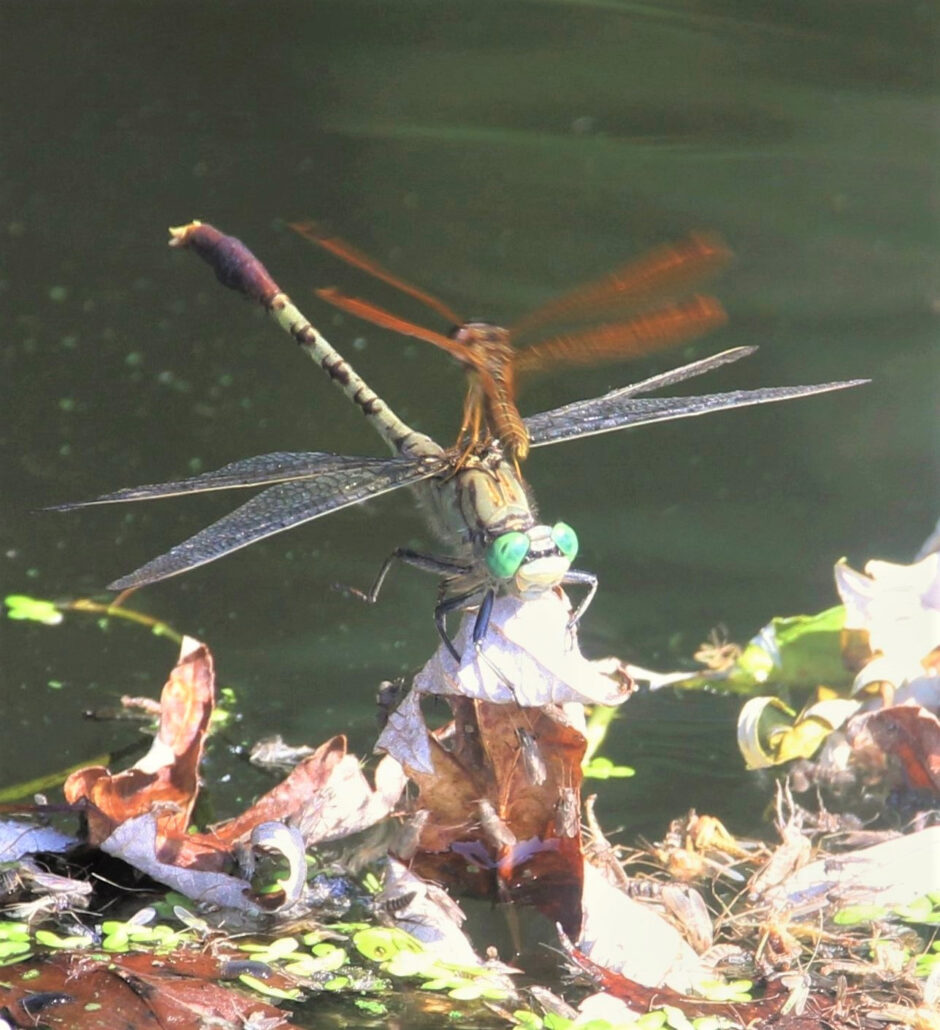
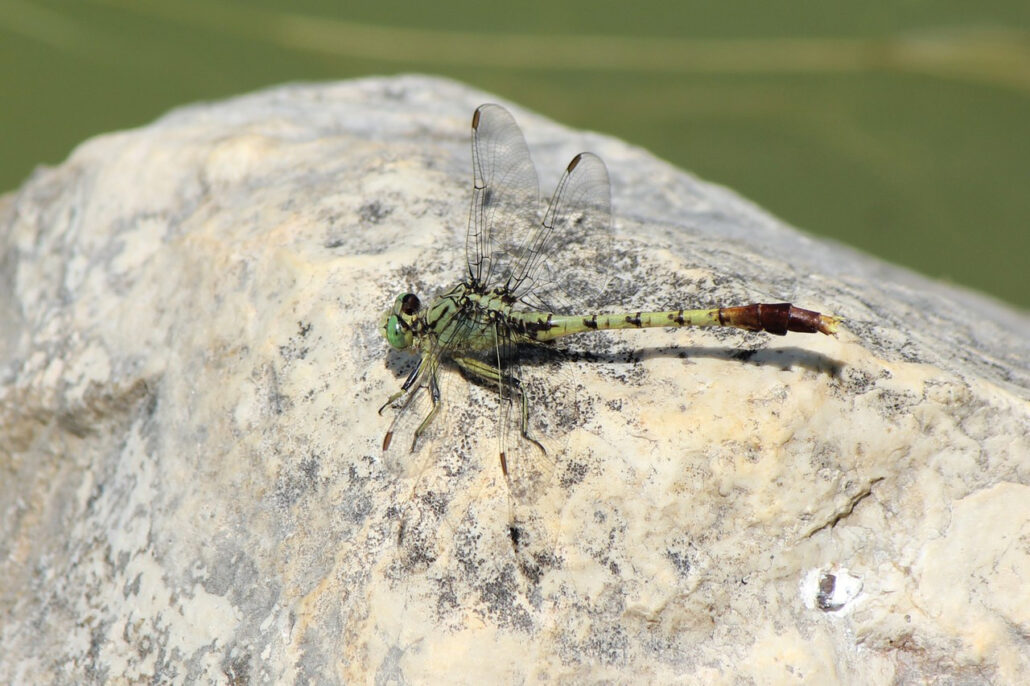
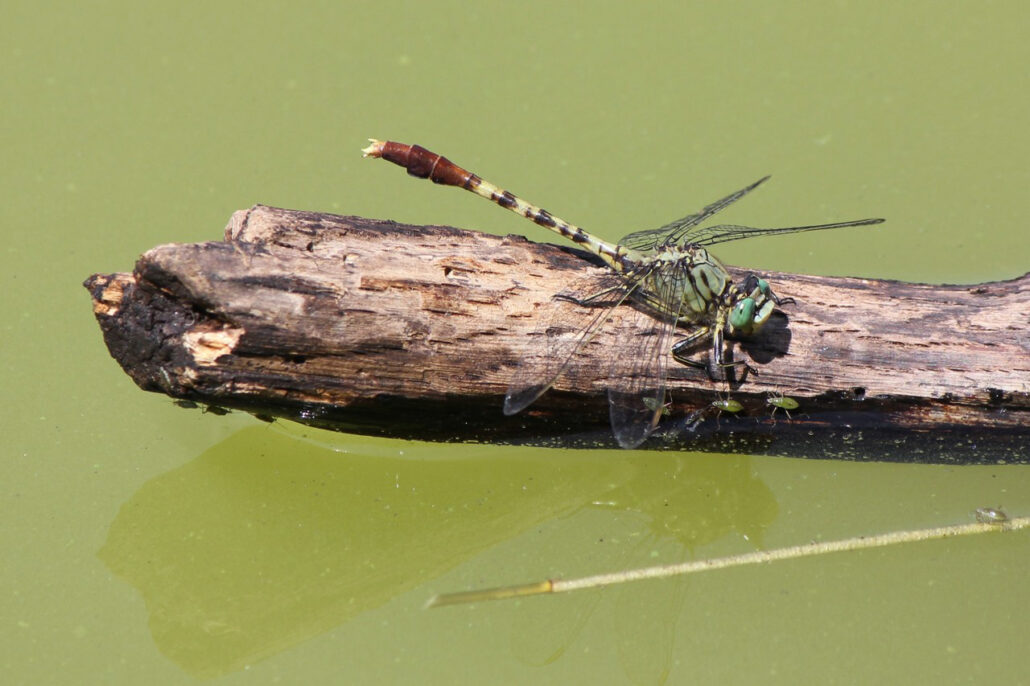
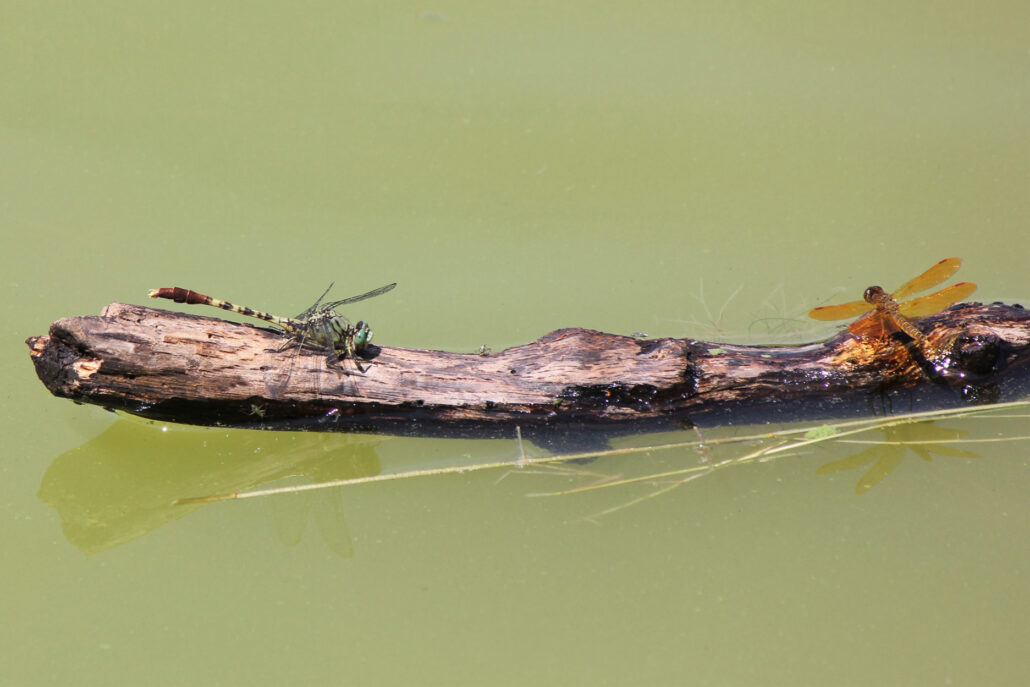
JADE CLUBTAILS (Arigomphus submedianus)are in the genus Arigomphus (the Pond Clubtails), an exclusively North American genus. Arigomphus, prefer their water still. They’re a pretty landlocked species, ranging from Texas, north through mid-continent to Wisconsin and Minnesota, where they’re found in lakes, rivers, streams, and mud-bottomed ponds and sloughs. They are common in Illinois but have been recorded only in the southern third of Wisconsin.
Pairs gather on shoreline vegetation. Males don’t guard females as they oviposit, which, because she lacks a real ovipositor, she accomplishes by allowing water to wash eggs from the tip of her abdomen. A gelatinous sac causes the eggs to stick to rocks and plants. Naiads are sturdy https://bugguide.net/node/view/1455474/bgimage. They prefer water that is unpolluted and well-oxygenated.
Spring is coming!
Kate Redmond, The BugLady
Bug of the Week archives:
http://uwm.edu/field-station/category/bug-of-the-week/
